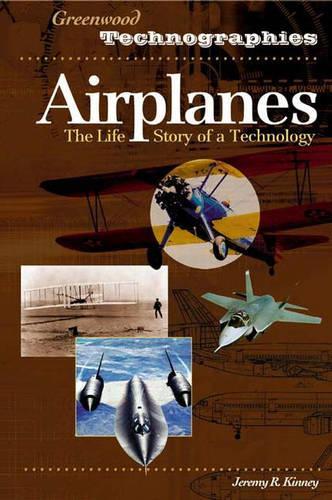
Airplanes: The Life Story of a Technology
(Hardback)
Publishing Details
Airplanes: The Life Story of a Technology
By (Author) Jeremy Kinney
Bloomsbury Publishing PLC
Greenwood Press
30th June 2006
United States
Classifications
General
Non Fiction
Aircraft and aviation
629.13334
Physical Properties
Hardback
184
Width 156mm, Height 235mm
425g
Description
The invention of the airplane redefined the way in which people travel, conduct commerce, spend their leisure time, and wage war. From the Wright brothers' wood-and-fabric Flyer to the modern jet aircraft, the airplane has evolved in countless ways as its many uses have unfolded. The development of safe and efficient air travel required solving multiple engineering riddles about aerodynamics, control, propulsion, and structures. This volume in the Greenwood Technographies series shows how the solutions to these riddles helped spur dramatic changes in the world's social and cultural life. The volume includes a glossary of terms, a timeline of important events, and a selected bibliography of useful resources for further information.
Reviews
Another in a Greenwood Press series of monographs, Greenwood Technographies, this publication by Kinney gives a detailed, informative picture of the history and advancement of the airplane, which has evolved from its beginnings with the first flight at Kitty Hawk in 1903 to the maneuverable jets that can break the sound barrier today. This book is written in a very general and understandable style. The author manages to do an impressive job of thoroughly discussing the details and specifics of the way that airplane technology improved and the political movements, world events, and social change that brought about these improvements. The introduction also offers an excellent overview of the physics of flight and the time line of the evolution of the airplane. Recommended. General readers; lower-division undergraduates; two-year technical program students. * Choice *
The Wrights called it a flyer, not an airplane. Wiley Post's luck ran out in 1935, but first he wore the world's first pressure suit at about 50,000 feet. The first American turboprop airliner debuted in 1958, but dragged six years after the British. Kinney, curator of the Aeronautics Division at the National Air and Space Museum, covers the efforts of everyone from a hapless flying monk in Malmesbury in the 1100s, Newton (lift and drag), Smeaton (cambered wings) and the remarkable Cayley who had most of it figured out in the first half of the nineteenth century. He is careful to keep his narrative accessible to general readers and includes a manageable glossary and list of related reading. He rightly devotes substantial space to the contributions of military and commercial flight but also describes general aviation and the more recent advances in going higher, faster and farther. * SciTech Book News *
Author Bio
Jeremy R. Kinney is Curator in the Aeronautics Division at the National Air and Space Museum of the Smithsonian Institution. He has served as the Centennial of Flight lecturer at the University of Maryland.
